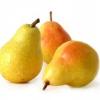"I found the original paper." http://www.jcancer.org/v04p0703.pdf
Cancer Fighting Super Cocktail - made from 6 over-the-counter supplements http://www.cancerdef...niversity/3375/ From the original paper, the cocktail takes 8 days to kill 100% of cancer in vitro.
Unfortunately, the Indole-3-carbinol concentration seems to be unattainable in vivo, and if attainable, might be too toxic.
When this thread started, the curcumin concentration also appeared unattainable. But with the introduction of UltraCur® from Ultrabotanica, it should now be attainable by taking 4 capsules at a time twice daily (for the 8 days). A plot of blood concentration vs time from Ultrabotanica would help verify this.
The 6 ingredients and their concentrations from the paper are:
Indol-3-Carbinol 4 ug/ml - appears to be 40x the concentration safely attainable in humans
Curcumin 2.25 ug/ml - 4 capsules of Ultrabotanica UltraCur®, repeated twice daily
Quercetin 1.5 ug/ml - 1 capsule of Now Foods 100 mg EMIQ, repeated twice daily
Genistein 3 ug/ml - 2 capsules of Vital Nutrients Genistein (once daily, half-life is 46 hrs)
C-phycocyanin 50 ug/ml - 2-3 heaping tablespoons of Nutrex hawaiian spirulina daily
Resveratrol 0.5 ug/ml - 2-10 caps (1-5 g) per dose of Mega Resveratrol, three doses/day
Supplement calculations:
Indol-3-Carbinol 4 ug/ml
http://cebp.aacrjour...tent/15/12/2477 "No detectable I3C was found in any plasma sample regardless of I3C dose or sampling time." (I3C doesn't survive human stomach acid). The I3C metabolite 3,3′-diindolylmethane (DIM) is found instead. A 400 mg dose of I3C gave about 50 ng/ml of DIM in the blood. A 1,000 mg dose gave about 600ng/ml, but more than 1,000 mg gave no further increase. A 200 mg dose of Bioresponse® DIM gives 90 ng/ml of DIM in plasma. A larger dose had little effect. So about 0.1 ug/ml of DIM in vivo is the best we can do. (Bioresponse® Dim is micronized for 2x better absorption).
Curcumin 2.25 ug/ml
One capsule of UltraCur® is reported to give a plasma level = 610 ng/ml at peak. http://www.longecity...pplement/page-2 To get 2.25 ug/ml peak reuqires, 2.25ug/0.61ug = 3.7 < 4 capsules. A human has about 5L of blood. 2.25 ug/ml x 5,000ml = 11.25 mg in blood. 4 capsules contain about 50 mg of curcumin - more than enough. A human has about 40L of fluid. 2.25 ug/ml x 40,000ml = 90 mg. 8 capsules contain about 100 mg, so tissue saturation is plausible with a repeated 4 capsule dose.
Quercetin 1.5 ug/ml
Enzymatically modified isoquercitrin (EMIQ) is water soluble. Bioavailability of oral EMIQ is 35% (in rats) https://www.ncbi.nlm...pubmed/19952424 "According to pharmacokinetic data, the absorption of EMIQ is up to 40 times greater (Cmax) and 15 times greater (AUC) than that of quercetin and reaches peak levels in the bloodstream in just 15 minutes." http://naturalfactor...tin-emiq-en-us/ To get 1.5 ug/ml in 5L of blood at 35% absorption takes (1.5ug x 5,000)/0.35 = 21 mg of EMIQ. To get 1.5 ug/ml in 40L of body fluid takes 8x as much = 168 mg of EMIQ. Now Foods EMIQ has 100 mg/capsule, so tissue saturation is plausible with a repeated 1 capsule dose. (Non EMIQ quercetin can have 40x less bioavailability and take up to 7 hrs to peak).
Genistein 3 ug/ml
https://www.ncbi.nlm.nih.gov/pubmed/12587954/ "the absolute oral bioavailability of genistein in male and female rats was 7 and 15%".
"Pharmacokinetic parameters Cmax, Tmax and AUC were similar to those reported in humans, which supports the use of the rat model for genistein toxicity studies." https://www.ncbi.nlm...les/PMC4010305/ Half life is long at 46 hours. Oral absorption is close to 90%, but there is extensive 1st pass metabolism in the liver. To get 3 ug/ml in 5L of blood at 7% bioavailability takes (3 ug/ml x 5,000)/0.07 = 214 mg of genistein. Vital Nutrients Genistein has 125 mg/capsule, so 2 capsules are required. To get 3ug/ml in 40L of body fluid may not more, because the blood concentration half-life of 46 hr makes it plausible that body fluids are saturated.
C-phycocyanin 50ug/ml
This comprises about 9% of Nutrex hawaiian spirulina. 1 tsp (3 g) has 270 mg. Several authors say its bioavailability is "high", although its altered by the gut, and then again by cells into very biologically active forms. To get 50 ug/ml in 5L of blood at 50% availability takes (50 ug x 5,000)/0.5 = 500 mg which is about 2 tsp of spirulina. To get 50 ug in 40L of body fluid takes 8x as much = 16 tsp, but it may build up (I didn't find half-life data), so 2-3 heaping tablespoons daily would be enough.
Resveratrol 0.5 ug/ml
Resveratrol has high absorption but low bioavailability. About 70% of an oral dose is absorbed, but its mostly excreted as metabolites in the urine. The intestines and liver metabolize it such that only trace amounts of unchanged resveratrol are found in plasma. https://www.ncbi.nlm...pubmed/15333514 (2012). There has been extensive research into enhanced delivery methods. https://www.ncbi.nlm...pubmed/21978644 Commercially available micronized resveratrol at 5 g/dose almost works. After a 5 g dose, it reached a peak of 0.5 ug/ml is one patient out of six, averaged about 0.15 ug/ml in 4 of the patients, and only reached 0.05 ug/ml in a 6th patient. The peaks occurred from 2 to 4 hr after dosing, then concentration dropped quickly and became undetectable at 8 hrs. https://www.ncbi.nlm...les/PMC3173869/ Micronized resveratrol (Mega Resveratrol, 120 capsules, 500 mg/capsule, 99% pure trans-resveratrol) is about $90 for 60 g. It would likely take 15 g per day for 8 days to approximate the desired amount. This would take two bottles at $180. However, the metabolites which have 20x greater concentration than the unchanged resveratrol are also active against some types of cancer, so this could be over kill. So 1g to 5g 3x/day may suffice. http://www.sciencedi...308814612004967 NB: The original paper used pure trans-resveratrol from Sigma.
Comment:
The resveratrol alternative, pterostilbene, is similar to resveratrol and is much more bioavailable, although not studied in this combination. If I had cancer, I would add it to the stack. The impossible concentration of I3C may have been essential. However, lower concentrations of this stack for a longer time, say 8-12 weeks, may also be effective.
Edited by RWhigham, 31 December 2016 - 07:37 PM.



















































